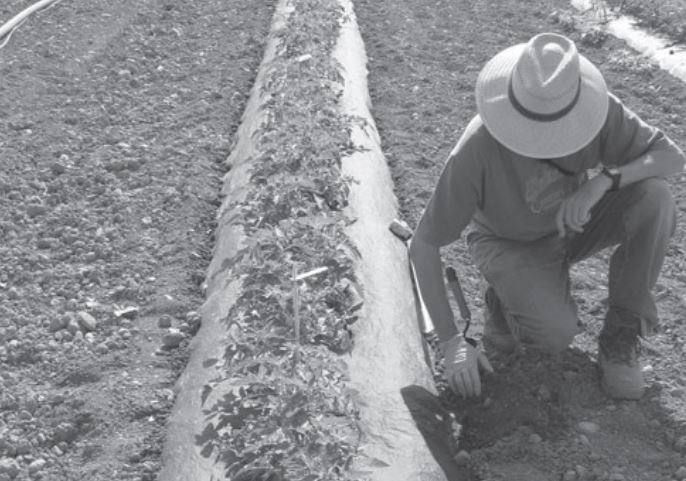Malas hierbas Ensayos Noticias Procedimientos físicos Monocotiledónea de Verano Dicotiledónea de Verano Tomate

Premio SEMh 2014: Desherbado mecánico eficaz en tomate de industria
Se trata de un artículo que ha obtenido el Premio 2014 de la Sociedad Española de Malherbología concedido en su Asamblea Anual el pasado 25 /11/2014 en Burgos a los investigadores de Aragón y Castilla-La Mancha A. Cirujeda, J. Aibar, M.M. Moreno y C. Zaragoza.
24 11 2014
El artículo fue publicado en la prestigiosa revista Renewable Agriculture and Food Systems.
El trabajo galardonado trata sobre los ensayos realizados en control mecánico de malas hierbas, en cultivos de tomate para industria. Una posible alternativa al acolchado con polietileno.
Effective mechanical weed control in processing tomato: Seven years of results
Abstract:
Open-air crops are important in Spanish horticulture. The limited number of herbicide active ingredients in minor crops, the waste problem of polyethylene (PE) plastic mulch and the high prices of biodegradable plastics leave hand-weeding and mechanical weed control as the most viable weed control methods. Different tools have been tested in northern European countries but their performance remains unknown in the edaphoclimatic situation of southern Europe. The objective of this work was to test novel physical weed control methods on processing tomato in northeastern Spain compared with other effective control methods, i.e., plastic and paper mulches. A first sequence of field trials was established from 2005 to 2008 at Zaragoza (Spain) to select the best physical control methods out of flamer, torsion weeder, finger weeder, flex-tine harrow and brush hoe used alone or in combination. The best method was the brush hoe which was then compared from 2009 to 2011 with PE mulch, biodegradable plastic mulch and paper mulch. Flamer, flextine harrow, torsion weeder and finger weeder performed quite irregularly due to crusty soil conditions and needed additional tools or repeated treatments to increase weed control efficacy. The brush hoe performed best in this soil situation working at about 5 cmdepth. Weed biomass reduction was higher than 80% in 6 out of 7 years and similar yield was obtained in the brushed plots compared to the yield obtained with PE, biodegradable plastic and paper mulch. The brush hoe is thus a suitable option for weed control in processing tomato while the other tools were too weak to control aggressive summer weeds in the tested conditions.
Key words: brush hoe, finger weeder, torsion weeder, flex-tine harrow, flamer, polyethylene mulch, Cyperus rotundus



